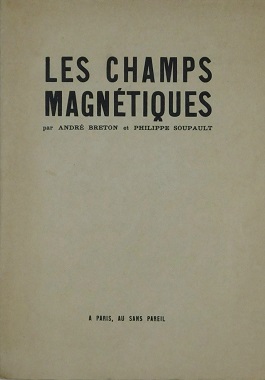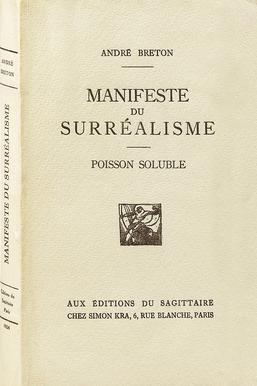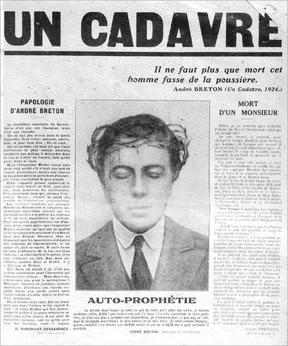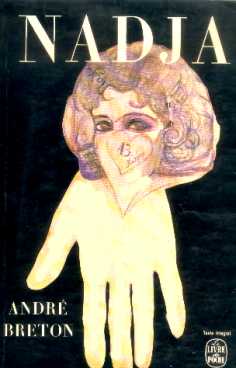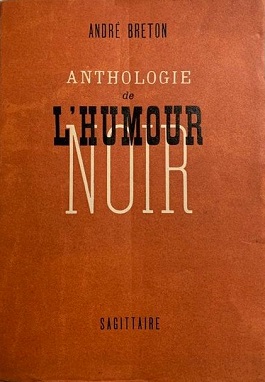André Robert Breton (19 February 1896 – 28 September 1966) was a French writer and poet, the co-founder, leader, and principal theorist of surrealism. His writings include the first Surrealist Manifesto (Manifeste du surréalisme) of 1924, in which he defined surrealism as "pure psychic automatism".
BIOGRAPHY
EARLY LIFE
In 1896, Breton was born and raised by his parents in a Parisian suburb; he spent a particular amount of time with his maternal grandfather,
who imbued in him a penchant for storytelling and an appreciation for the minute details of the world.
Driven by his passion for Symbolism, fascinated by the exemplary renunciation of Paul Valéry, who lucidly chose to put an end to the practice of poetry and who,
in his eyes, resembled the destiny of Arthur Rimbaud, Breton sent a letter to Valéry on March 7, 1914, to which he attached his first attempts at poetry.[1]
As war broke out in Europe, he was drafted into the military in 1915 as a medical officer;
he spent his time milling about the psychiatric units of multiple military hospitals, studying psychology in his spare time.
In August 1916, while at the neuro-psychiatric center of Saint-Dizier, he discovered [through the works of Emmanuel Régis and Angelo Hesnard]
the essence of Freud's thought, whose works had not yet been translated into French:
this reading had the effect of a revelation for him, spurring him to begin writing poetry inspired by his subconscious processes rather than his waking ones.[1]
CAREER
After the war’s conclusion, Breton took to publishing his work in official outlets, interspersed with his Symbolism-inspired flair.
As time went on, he started taking cues from the burgeoning Dada movement; he published the poem Le Corset-Mystère,
composed with bits of advertising and ready-made expressions as an avant-garde expression of discontent with modern existence.[1]
Around this same time, he developed a correspondence with Dada co-founder and Romanian poet Tristan Tzara,
through which they shared a similar fear that their writing came from a place of weakness and fear of death;
though their correspondence suffered from friction and Breton’s reservations, in 1919,
he finally met fellow poet Phillippe Soupault and embarked on a new venture - the collaborative work, The Magnetic Fields.
This work was one of the first to utilize the technique of automatism - automatic writing, without a set subject,
start or endpoint - pure stream-of-consciousness storytelling.[1]
He eventually distanced himself from Tzara and Dada altogether,[2] finding more solace in new works of visual art,
namely those of Giorgio Chirico and Max Ernst, eventual contemporaries and comrades of his.
From here, a new slew of collaborators and likeminded artists began to crowd around Breton,
who took to collecting their ideas and desires for a new artistic sphere - in 1924, he published the very first Manifesto of Surrealism.[1]
To quote an biographical account of Breton’s life and achievements, “The history of the magazine cannot be summed up in a few lines.
Sometimes undermined by dissensions and difficulties of all kinds, La Révolution surréaliste accompanied commitments, reorientations, and splits until 1929.”
It was in the Manifestoes that the artistic, cultural and political explorations of surrealist artists were laid bare,
where key exercises and pieces were first unveiled to the scene, and where discourse on the art world and its potential directions were had for years to come.
Later on, in 1928, Breton published his seminal novel, Nadja, oriented around the internal life of a bizarre young woman.
The novel is wrought with constant wandering, both physical and mental from its main character as she deliberates on the nature of
her own nomadic life and her existence as a manifestation of Breton’s own neuroses.[1]
The 1930s were an era of further philosophical exploration for Breton, who started engaging with the works of Hegel
and incorporating his modes of analysis into his surrealistic work; despite his many social struggles around this time [including divorce from his first wife],
he pressed on in his writing, publishing the essay Les Vessels Communicants in 1932. As surrealism grew in popularity,
Breton found himself traveling around Europe to conventions dedicated to the art movement; conversely,
the magazine Minotaure began publication in the early 1930s, drawing in Breton as an editor in 1938.[1]
LATER LIFE
As the 1940s rolled around, Breton began brushing up against surrealist writers and painters in territories outside of Europe;
spending 5 years in America due to WWII, he expressed a distaste of surrealism’s growing popularity [and Salvador Dali’s personal claim to be the movement’s figurehead].
He grew in awareness of the mystical and effortlessly surreal works coming out of colonized territories and native people to the Americas and Caribbean,
praising the “primitive” and “mythical” aspects of their work, marking them as worthy additions to the Surrealist sphere.
In multiple essays and publications, he discussed his appreciation for African and Oceanic art,
which [to him] seemed to embody the irrational, subconscious flairs of surrealist work in a way Europeans and Americans seemed incapable of.[1]
Breton eventually returned to Paris in 1946, with his new wife and daughter; there, he opposed French colonialism as a signatory of the Manifesto of the 121,
against the Algerian War. In the 1950s, he spent many years writing and organizing artistic exhibitions, in hopes of fostering a new group of surrealist artists.
Breton died at the age of 70 in 1966, and was buried in the Cimetière des Batignolles in Paris.[2]
SELECTED WORKS
(1919-1940)
BIBLIOGRAPHY
- 1. n/a. "André Breton biography." André Breton. https://www.andrebreton.fr/card/andre_breton
- 2. n/a. "André Breton | The Poetry Foundation." The Poetry Foundation. https://www.poetryfoundation.org/poets/andre-breton
- 3. n/a. "André Breton." Wikipedia.com. https://en.wikipedia.org/wiki/Andr%C3%A9_Breton
